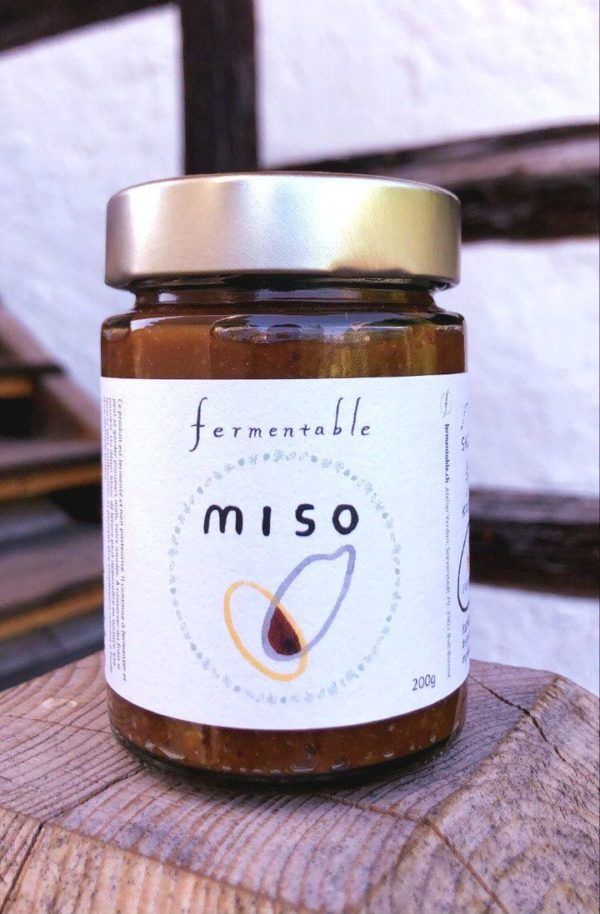Miso
CHF12 – CHF22
Once an elite delicacy, now a universal source of flavour and health.
Miso used to be written as 身礎, which translates the foundations of one’s body, that is how integral a part of Japanese cuisine it is. It is in the people’s makeup. Now it’s written 味噌(same pronunciation) and can be loosely translated to mean hectic, noisy flavour. I personally love this as miso is known to cover all five flavour components:
Saltiness, Sweetness, Bitterness, Acidity, Umami
Being from Osaka, my preference is for rice miso and I tend to stick to traditional methods using the usual suspects: rice koji, soybeans and salt. The rice is organic and comes from Italy and the soybeans hail from Bio Waeberhof in Ins. I favour sea salt, given my origin countries are both islands.
My miso is typically sweeter and lower in salt than what you find on the market here, but I ferment it for a year, unlike with shiro miso. I do like to play with variations on koji:bean ratio and mix up the beans too, so keep an eye out for the details on each jar.

